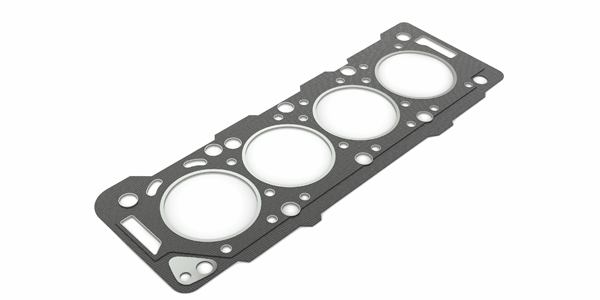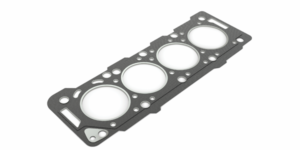Car gaskets are usually replaced on an “as-needed” basis as when an engine is leaking coolant, oil, vacuum or compression. New gaskets also may be needed when doing car repairs that involve engine disassembly such as removing an intake or exhaust manifold, valve cover, timing cover, oil pan or cylinder head. New gaskets are also required when changing a water pump, thermostat or throttle body.
Replacing a gasket is usually not a big deal, unless it involves a cylinder head gasket. A leaky head gasket is bad news because it takes a lot of effort to pull the head. Everything that is connected to the head or is in the way has to be disconnected (intake manifold, exhaust manifold, valve cover, timing cover and chain or belt on an overhead cam engine, possibly the alternator or A/C compressor). The labor alone on a head gasket job can run close to $1,000 or more depending on the application.
Adding a bottle of head gasket sealer to the cooling system may buy the motorist some time, and may even seal a small leak in a head gasket permanently. But for a compression leak, there is no easy fix. The head will have to come off so the gasket can be replaced. That means your customer will need not only a new head gasket, but also intake and exhaust manifold gaskets, valve cover gaskets and possibly a timing cover gasket (OHC engine).
Other items that will likely be needed to complete a head gasket replacement include coolant, maybe oil, oil filter, spark plugs, hoses and new cylinder head bolts. Torque-to-yield (TTY) head bolts that are used on many late-model engines are one-time use bolts, and should not be reused due to an increased risk of breakage. If the head gasket set does not include new TTY head bolts, be sure to recommend them to your customer.
Most late-model engines have Multi-Layer Steel (MLS) head gaskets. MLS head gaskets typically have three to five layers of steel covered with a soft surface coating on the outside. MLS gaskets are more durable than other types of head gaskets, and will usually last a long, long time. However, they are not reusable even if they appear to be in good condition. So if a customer is pulling a head off a motor to do valve work, the old gasket must be discarded and replaced with a new one.
MLS gaskets have special installation requirements. The sealing surfaces on both the cylinder head and block must be clean, smooth and flat, and within the recommended surface finish specifications if the customer is installing an OEM replacement gasket. OEM head gaskets usually require a mirror-like surface finish of 30 microinches or less. But most aftermarket MLS gaskets have a thicker, more compliant surface coating that allows them to safely handle surface finishes up to 60 microinches.
Most head gaskets are installed dry (except for some older embossed steel head gaskets which may require sealer), and sealer should never be used on any soft-face, coated or MLS head gasket.
Head bolts must be torqued in a specified sequence and to a specific torque and/or twist angle value to properly load and seal the head gasket. This requires an accurate torque wrench, angle gauge and up-to-date torque specifications from the vehicle manufacturer.
Intake manifold gaskets also can be rather complex, with multi layers, special seals around coolant and intake ports, and steel or plastic carriers. Over time, some gaskets may deteriorate and allow coolant and/or vacuum leaks. As with head gaskets, both mating surfaces must be clean, smooth and flat for a good seal.
Most valve cover and pan gaskets on late model engines are one-piece molded synthetic rubber. The gaskets absorb oil over time, which actually helps them seal better. However, the swelling can make it difficult or impossible to reuse such gaskets if they are removed. For this reason, new gaskets are always recommended.











